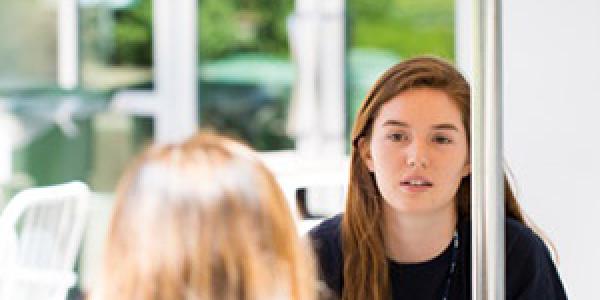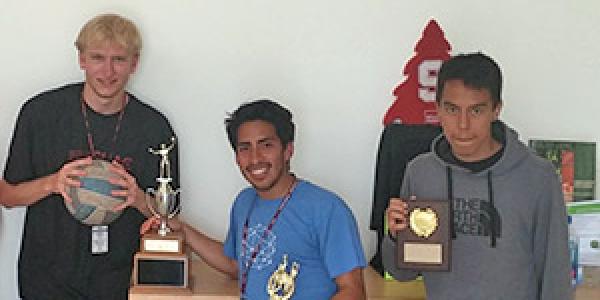Intern Testimonials
Paul Mgbam is a recent graduate from Santa Clara University, who spent his third summer as an LCLS intern in the Biosciences Division.

“You get to be part of some really incredible research at LCLS. This internship provides endless opportunities to learn from different people – my mentor Hasan DeMirci, the research assistants in the lab, and even PhD students on Stanford’s campus.”
Rita Koulikova, left, is an undergraduate student from UCLA majoring in applied mathematics. She used MATLAB to create a highly detailed analysis of the LCLS X-ray laser’s behavior in different experimental conditions, influenced by factors such as energy and pulse intensity. Analyzing data from similar experiments allows researchers to compare energy ranges beforehand, saving valuable experimental time.

“This internship has shown me how computer science meets the needs of research facilities like SLAC, by helping the laser run smoothly and accurately to save the researchers experimental time.”
Yashas Rao recently graduated from California Polytechnic State University as a biochemistry major and is now a full-time employee at SLAC. With the help of his mentor Hasan DeMirci, a research associate with SLAC’s Biosciences Division, Yashas led a time-resolved serial femtosecond crystallography (TR-SFX) experiment at SACLA, another X-ray free electron laser facility in Japan this past May.

“When I first began as an intern, I never thought I would be working with X-ray crystallography—but here I am three years later, leading an experiment at another X-ray laser facility in Japan.”
Jenna Hoover, right, a biochemistry major at University of California, Santa Barbara, spent three summers as an LCLS intern. Jenna wishes to attend dental school or pursue a PhD in organic chemistry, but is also interested in computer programming at LCLS, where she used MATLAB to program rules so the accelerator can automatically adjust the laser’s voltage. With the new LCLS-II upgrade coming up, this computer-based system will be crucial for freeing-up the researchers’ time.

“Ultimately, the specific knowledge that we gain about the LCLS accelerator may or may not transfer from this lab to another. But learning how to learn in a brand-new field and about the capabilities that labs like SLAC possess are extremely applicable skills for working at any laboratory in the future.”
Agustin Pacheco, in blue, is an undergraduate physics major at University of California, Berkeley, with a strong interest in electrical engineering. Agustin designed an automatic filter that will replace the less accurate physical analog being used to refine the signals produced by the Stanford Synchrotron Radiation Lightsource.

“When applying to this internship, I requested a project in electrical engineering that because I would like to pursue a career in engineering. It’s something I’ve never done before, but I’m getting the right guidance from my mentor and hands-on experience to smoothly transition.”
